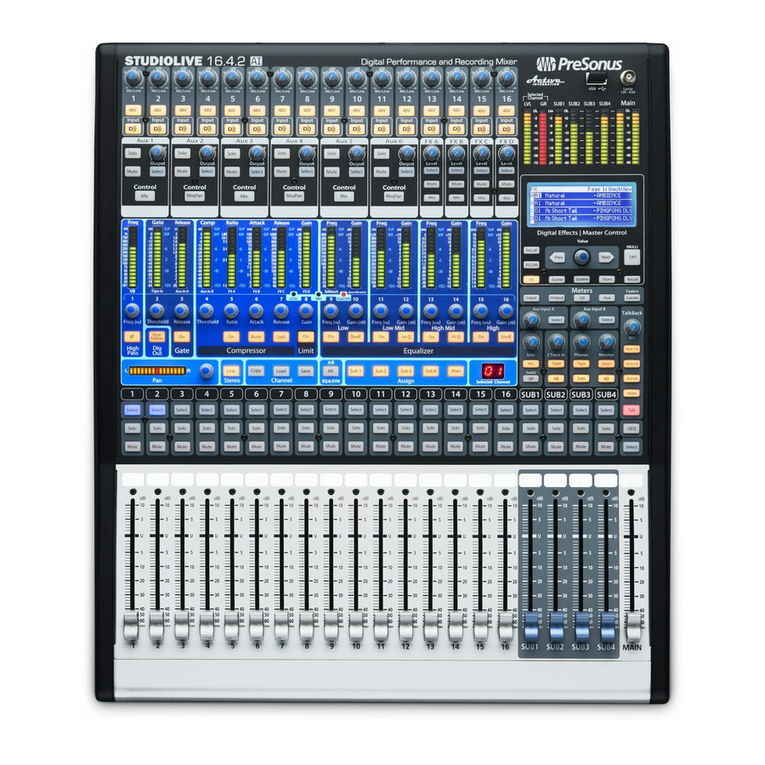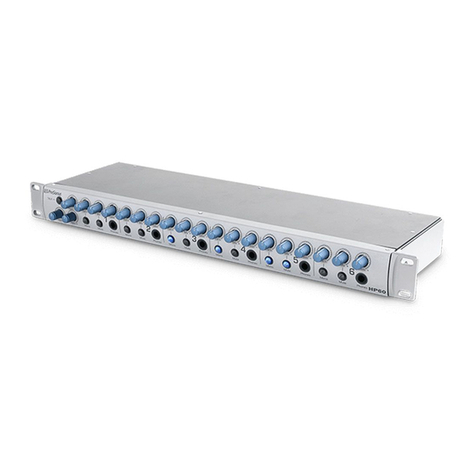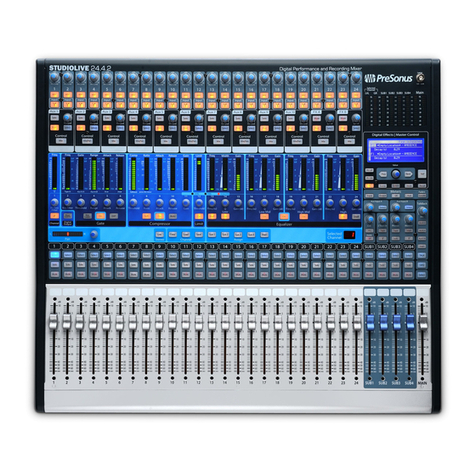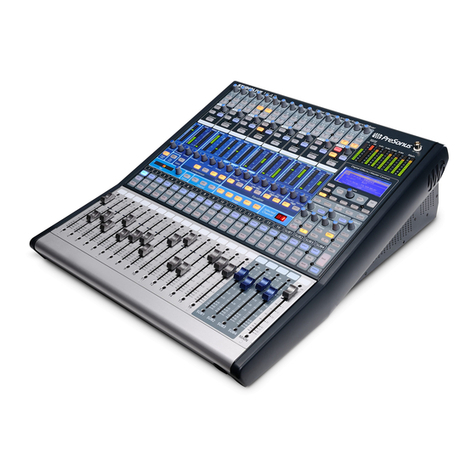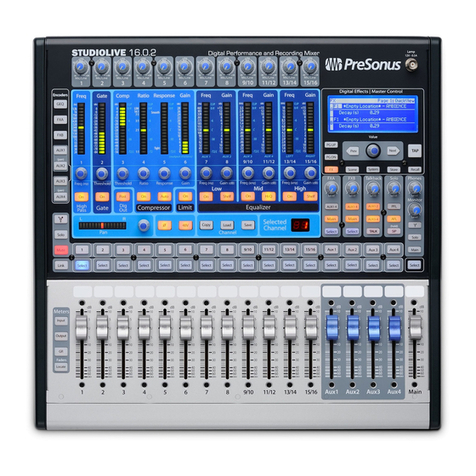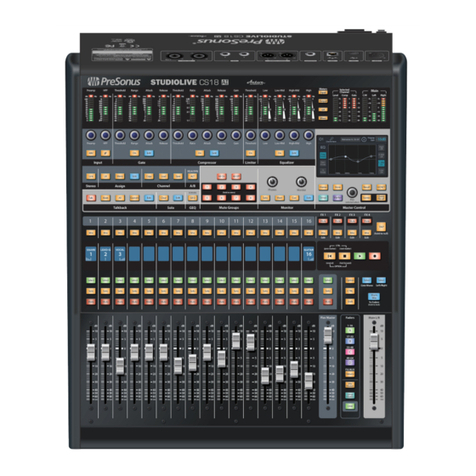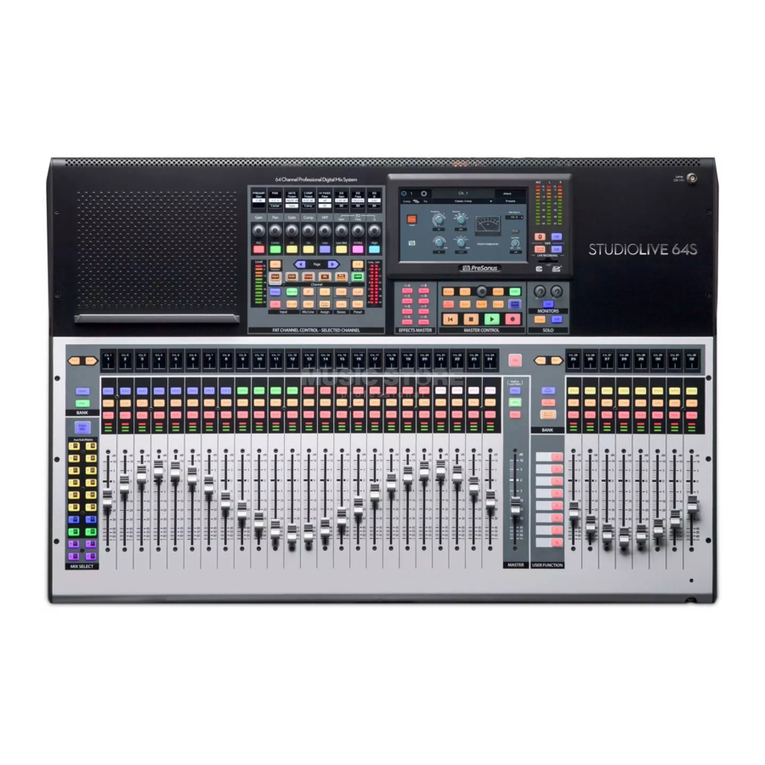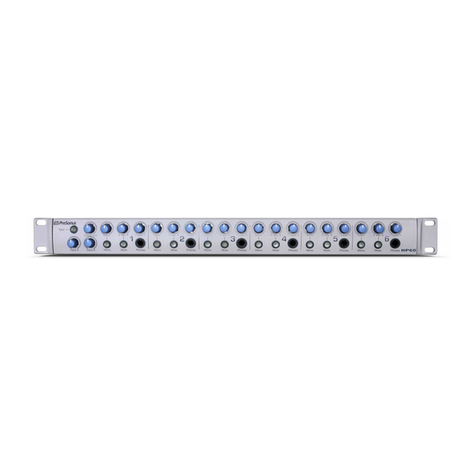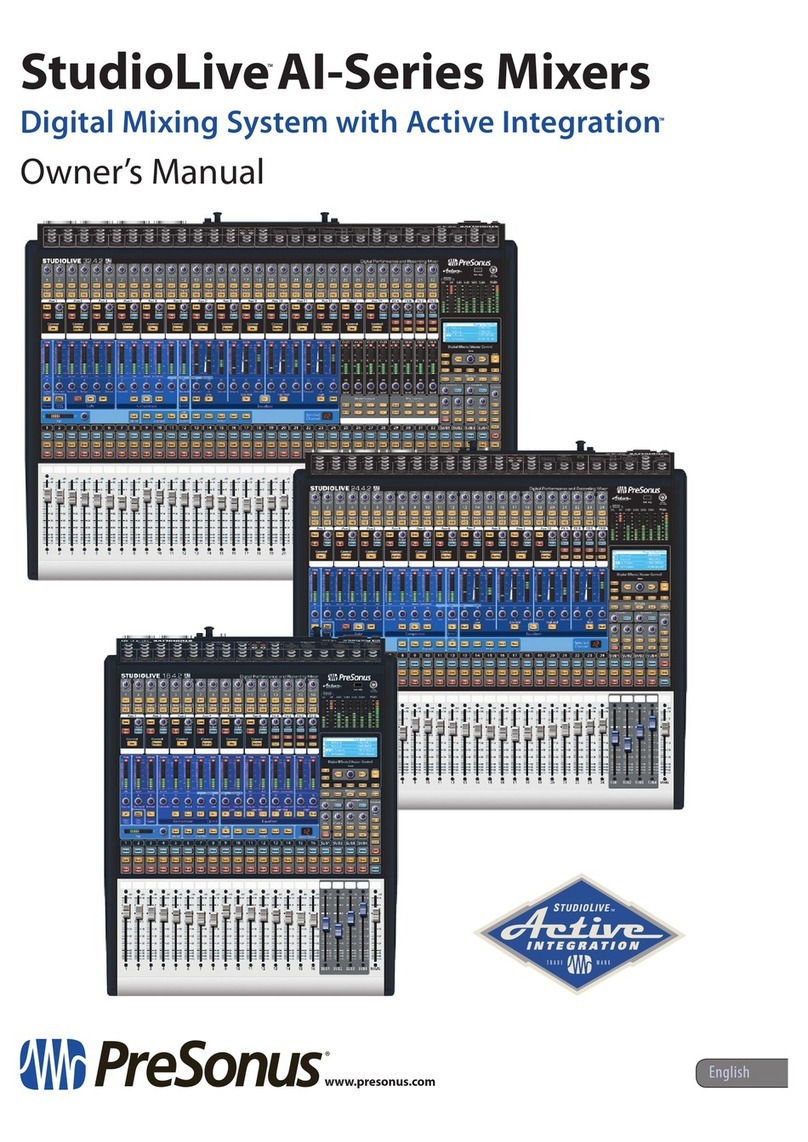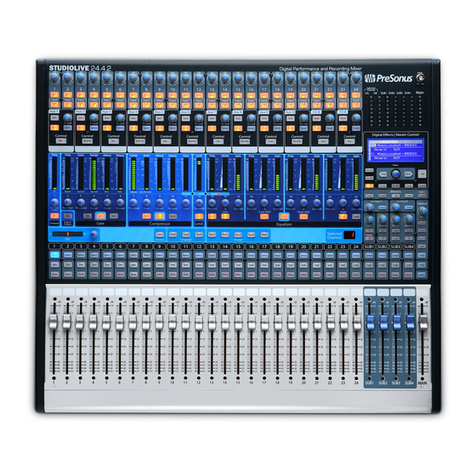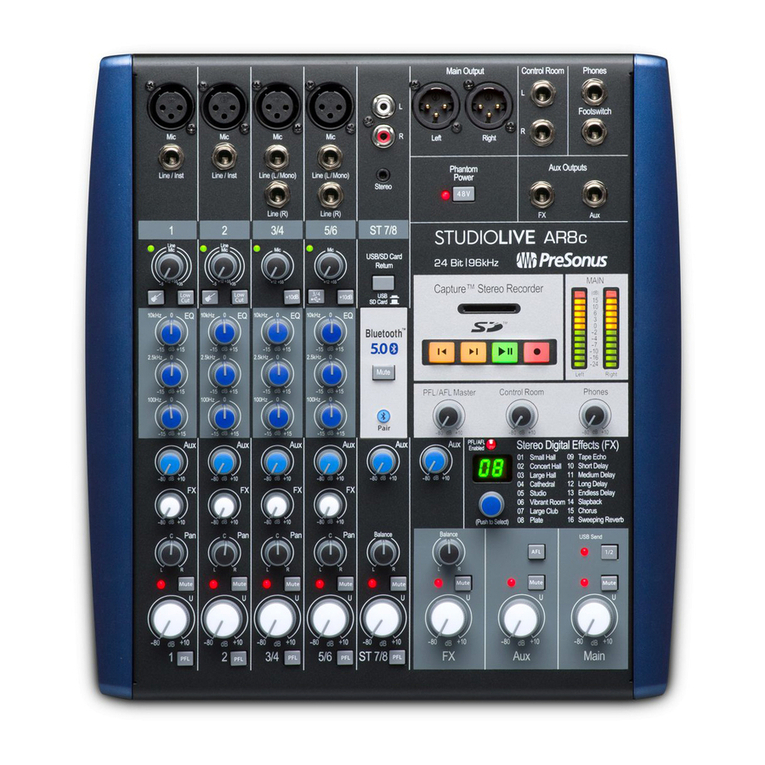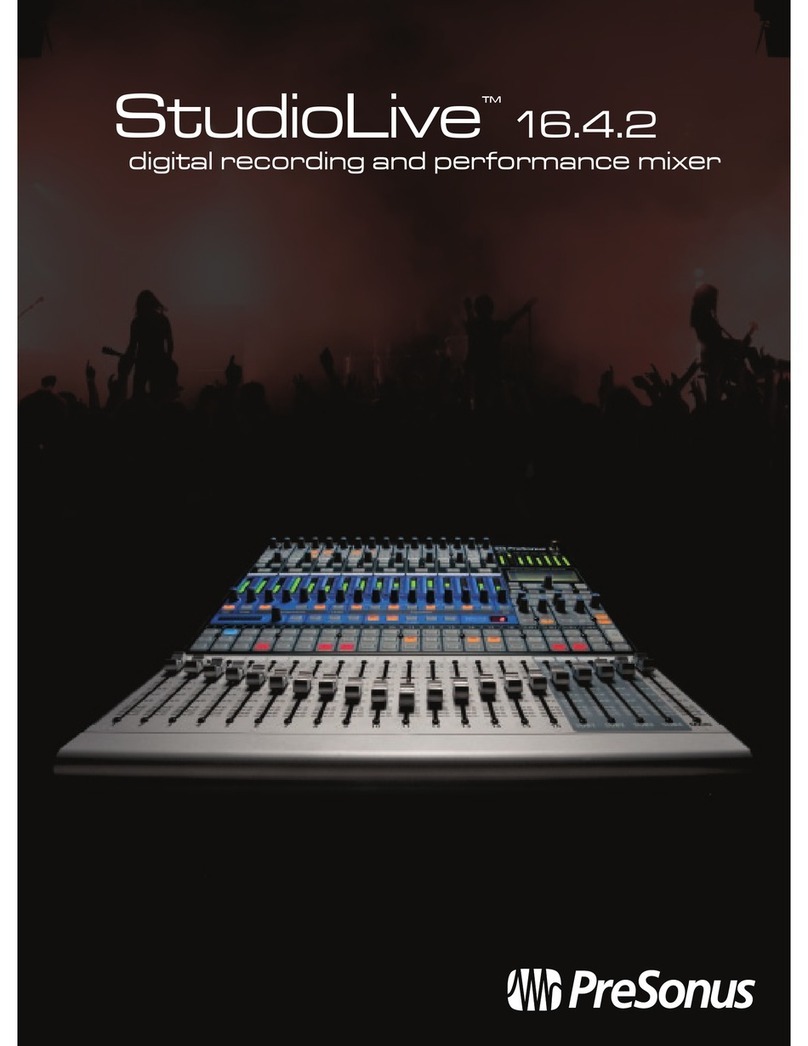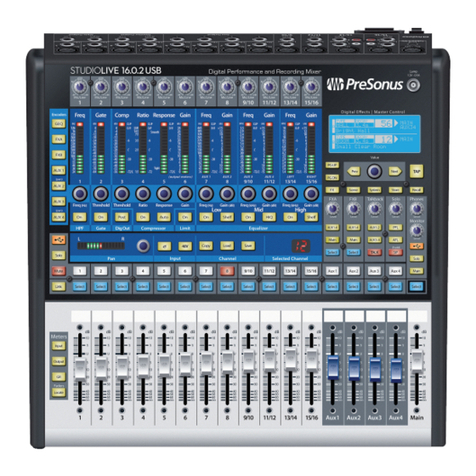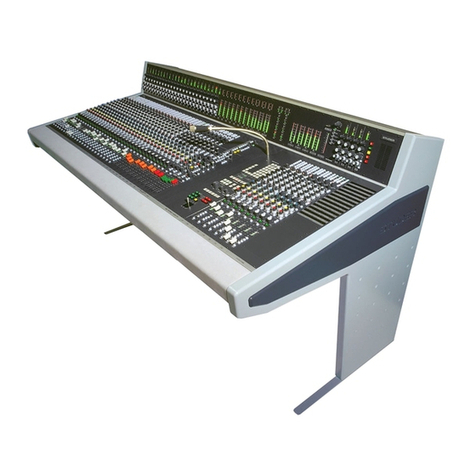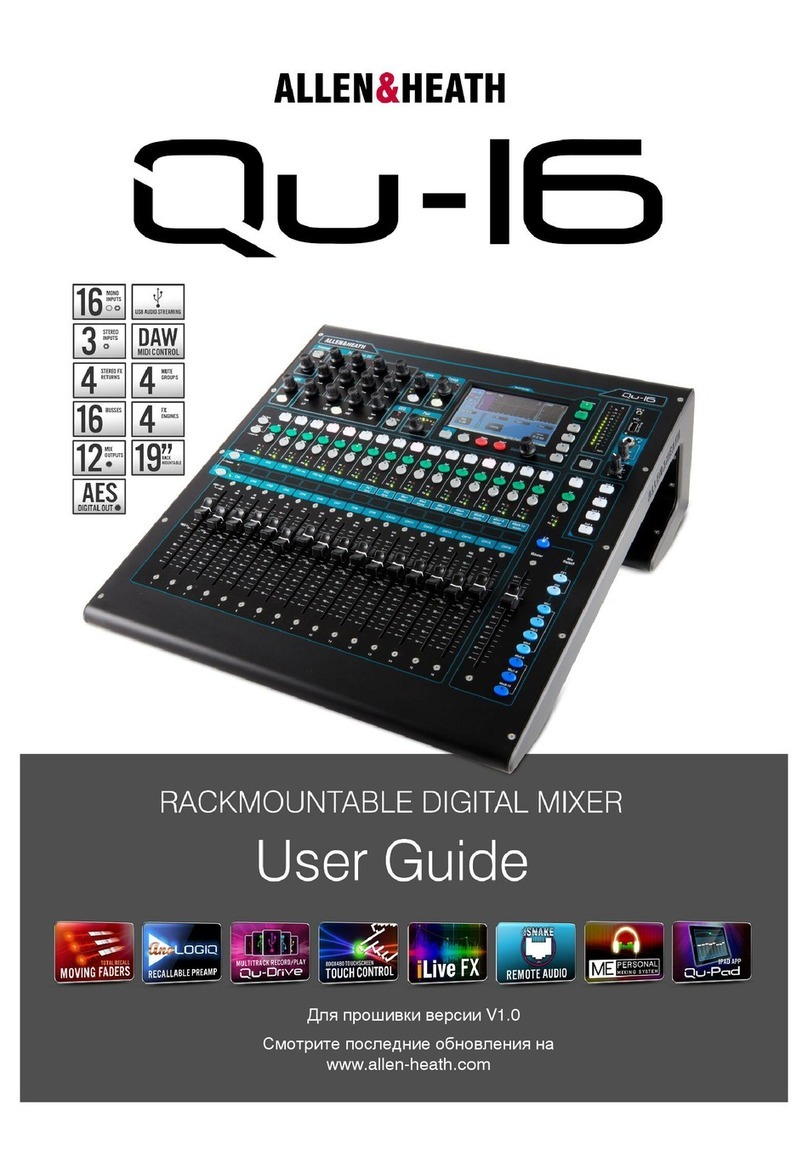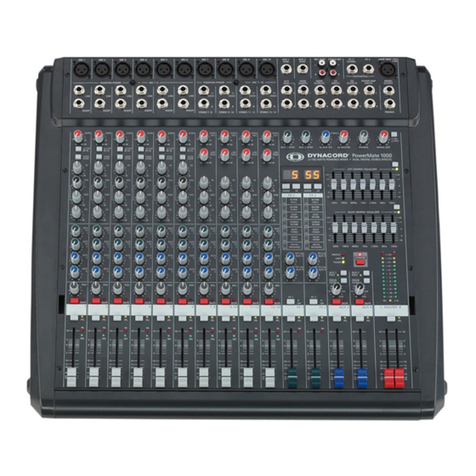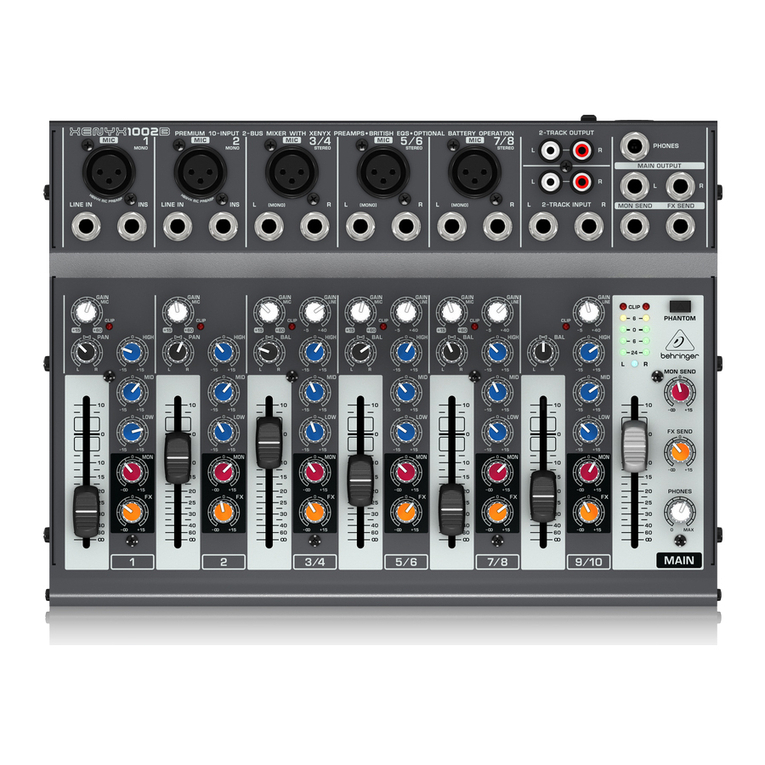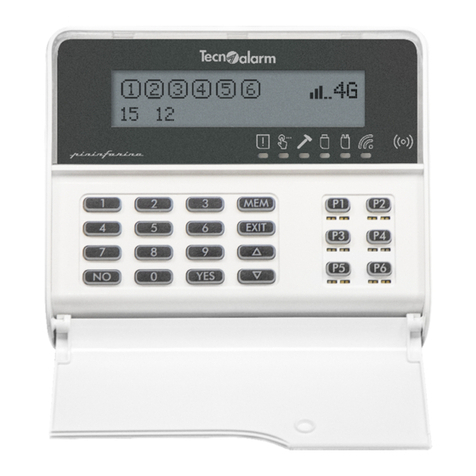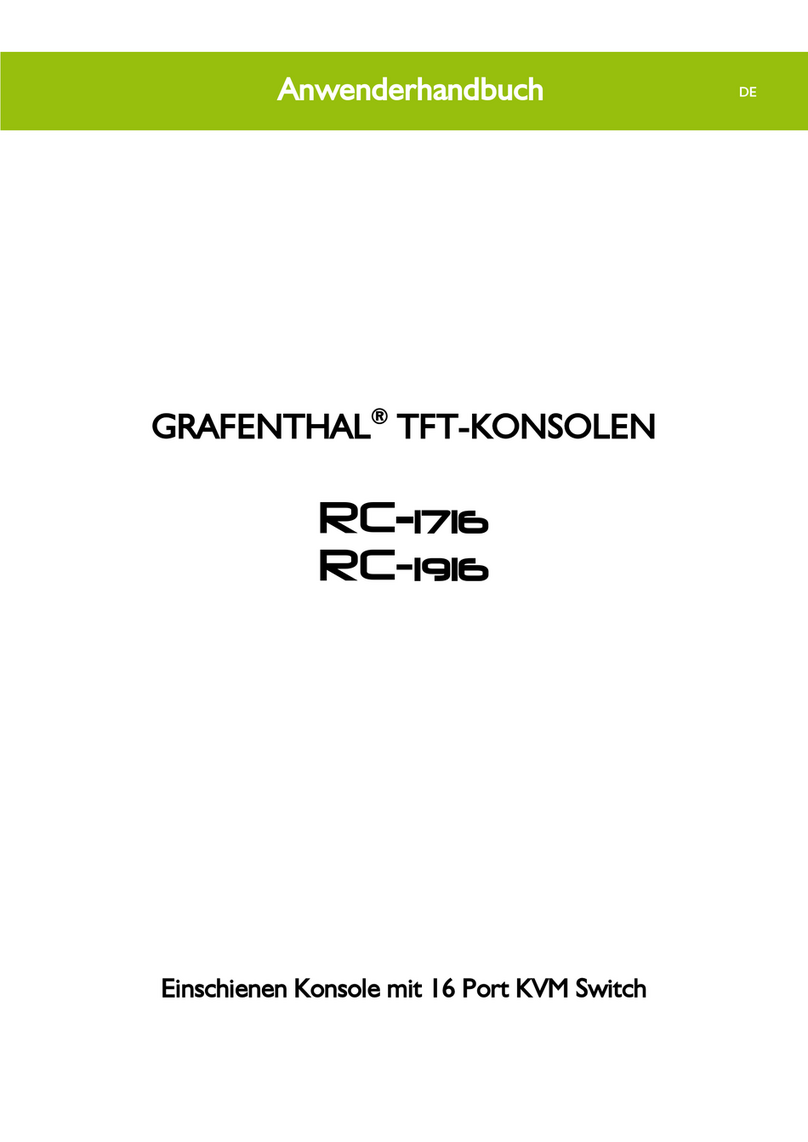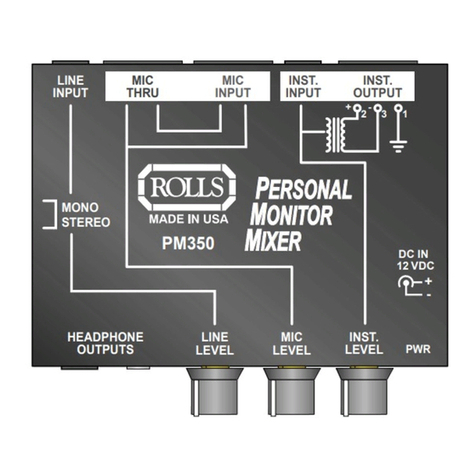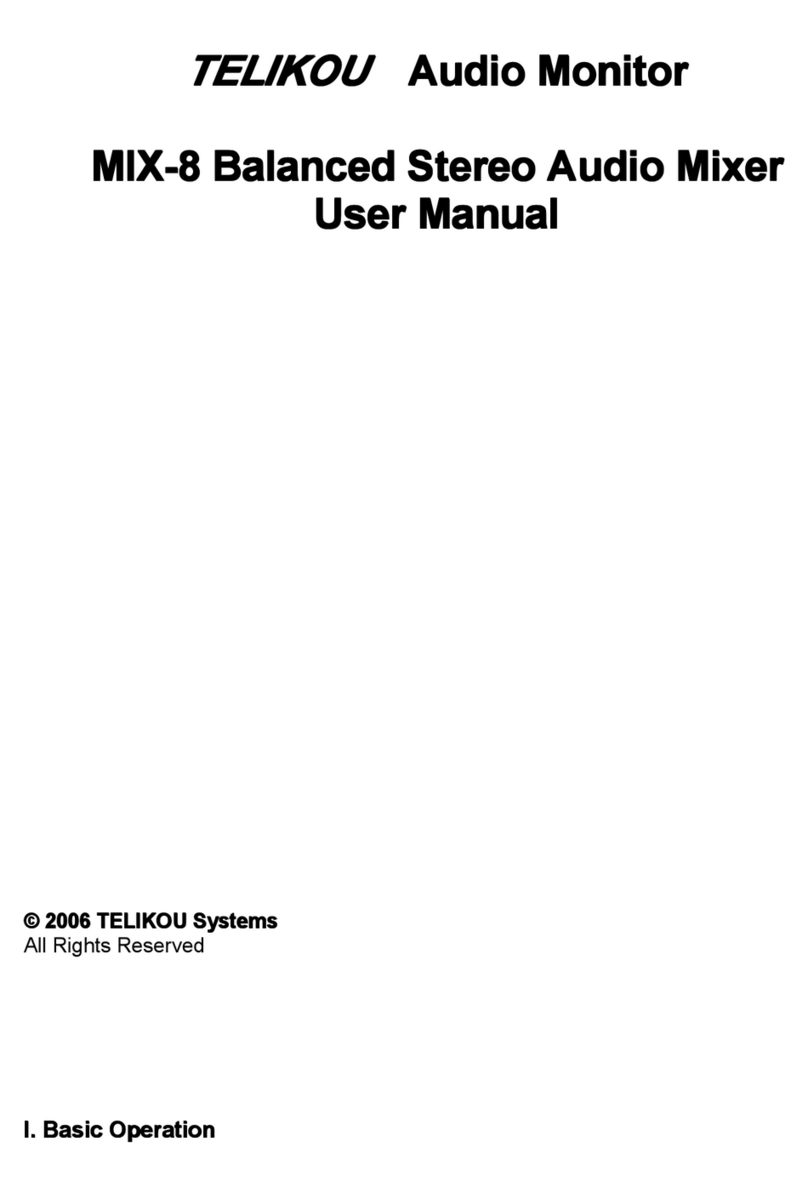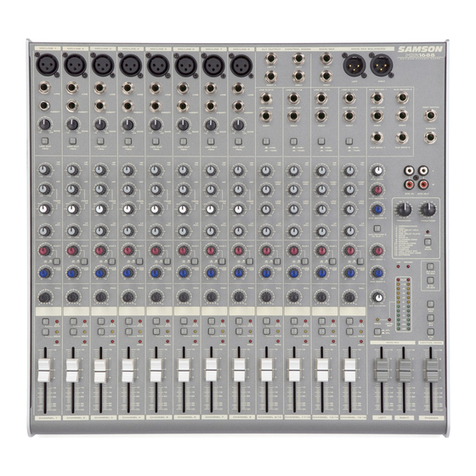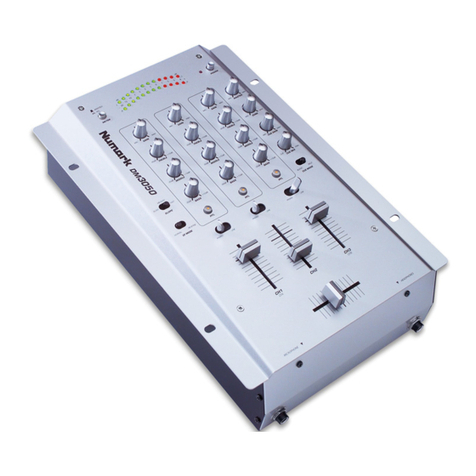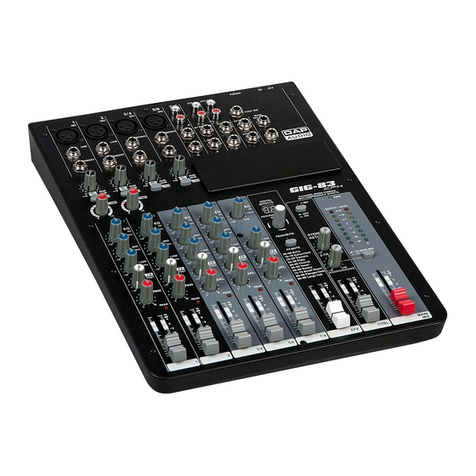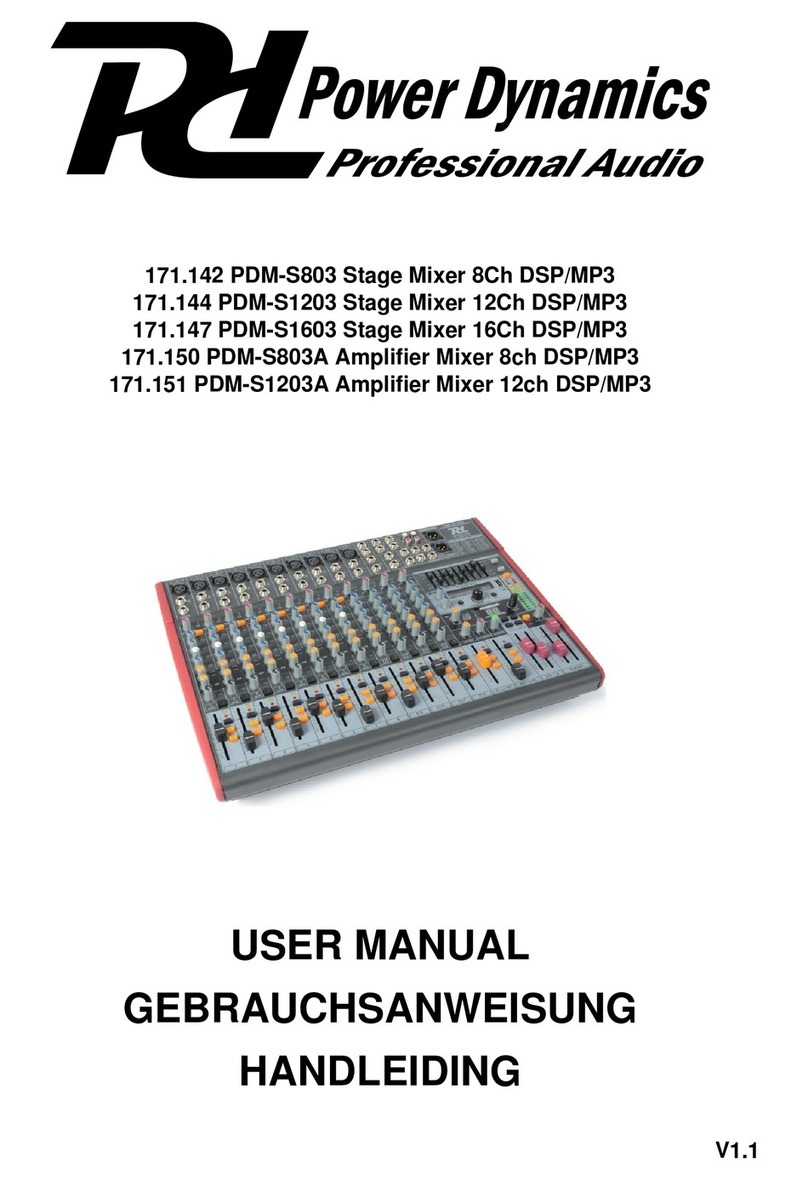16
3Networking the StudioLive CS18AI Control Surface
3.1 Networking Overview
Control and Audio Data Connections
Two types of data flow between your CS18AI control surface and your RM mixer
or computer: control and audio. Control connections can be made over standard
Ethernet networks, including wireless connections, but sending or receiving
audio requires an Ethernet AVB connection, which cannot be done wirelessly.
Control: This is the primary connection between the CS18AI controller
and your StudioLive RM-series mixer or your computer. The CS18AI
uses this connection to modify settings. When connected to RM-series
mixers, the CS18AI controls the mixers’functions. When connected to a
computer, the CS18AI can control Studio One or Capture software.
Audio: An Ethernet AVB connection enables routing audio to/from the CS18AI’s
audio inputs and outputs with an RM-series mixer or compatible computer.
Power User Tip: Network connections occasionally require troubleshooting,
especially when a lot of wireless networks are in use. Because of this, it is
always a good idea to get your networked devices and CS18AI control surface
happily communicating before the pressure is on and you have a singer
trying to dial in a monitor mix while you’re trying to mic the drum kit.
About Ethernet AVB
AVB (Audio Video Bridging) is an extension to the Ethernet standard
designed to provide what network geeks call “guaranteed quality of
service,”which simply means a guarantee that audio samples reach
their destinations on time. AVB has been adopted by numerous audio
companies, and more companies are adding it all the time.
Ethernet AVB offers a number of attractive features:
• Long, light cable runs. A single lightweight CAT5e or CAT6 cable can
be run up to 100 meters (300 feet). This makes it easy to have audio
I/O located in different rooms (or even different venues in the same
building) and run multichannel audio between them in real time.
• Low, predictable latency. The Ethernet AVB specification states
latency of no longer than 2 ms sending an audio stream point-
to-point over up to seven “hops”(trips through switches or other
devices) at 1x (less than or equal to 48 kHz) sample rates.
• Scalable, with high channel counts. AVB’s bandwidth is sufficient to carry
hundreds of real-time channels using a single Ethernet cable. This offers the
future possibility of expanding your system with additional devices that contain
different kinds of audio I/O, multiple controllers, and other useful functions.
• Integrated clock signal. In a digital audio system with multiple devices,
having a master clock is absolutely critical. The AVB specification defines
such a clock to be accurately distributed to all devices in the system.
• High sample rates: AVB is capable of operating at high
sample rates for high-resolution recording.
Power User Tip: The most important rule to keep in mind when setting up an
AVB network is that all the devices, routers, and switches between the talker
(device sending audio) and listener (device receiving audio) must be Ethernet
AVB-compatible. Plugging in a standard Ethernet device or switch will not carry
the audio data. In this situation, the CS18AI can readily be used for control
but cannot carry signals from its audio inputs or to its monitor outputs.




















